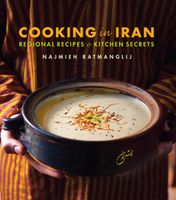🌷 Spring savings – save 25% on ckbk Premium Membership with code SPRING25
Sesame and Halva
Published 2020
Sesame is an annual flowering plant that can be up to 3ft/1m tall. Sesame seeds come from the elon-gated pods of the plant. In Iran, the seeds, and the ground form, tahini, are both called ardeh (“tahini”comes from the Arabic “to grind”). Their role in Iranian cooking is mentioned in millennia-old cuneiform tablets about Elam (ancient Khuzestan). Sesame plant cultivation goes back at least 3,000, years and its seeds are among the oldest oil seeds known to humankind. To make tahini, sesame seeds are soaked in salted water overnight to be able to remove the skins. Next, they are rinsed, drained, dried, and toasted in an oven. The toasted seeds are then ground. The best tahini in Iran comes from Ardekan near Shiraz, where they also make the most renowned tahini paste, called halva in the West but halvardeh in Iran (also pashmak ardeh in southern Iran). The tahini-workshops in Shiraz, Lar, and Evaz have been making artisanal halvardeh for many generations, passing skills down from father to son. Each claim to have the best halvardeh. There are two main types: one is dense and the other is soft and stretchy. They are also variably made, either with a sugar syrup or a date syrup, and can be flavored with cinnamon, cardamom, and rose water. Pistachios, almonds and walnuts may also be included.
Become a Premium Member to access this page
Unlimited, ad-free access to hundreds of the world’s best cookbooks
Over 150,000 recipes with thousands more added every month
Recommended by leading chefs and food writers
Powerful search filters to match your tastes
Create collections and add reviews or private notes to any recipe
Swipe to browse each cookbook from cover-to-cover
Manage your subscription via the My Membership page
In this section
Part of
Advertisement
Advertisement


